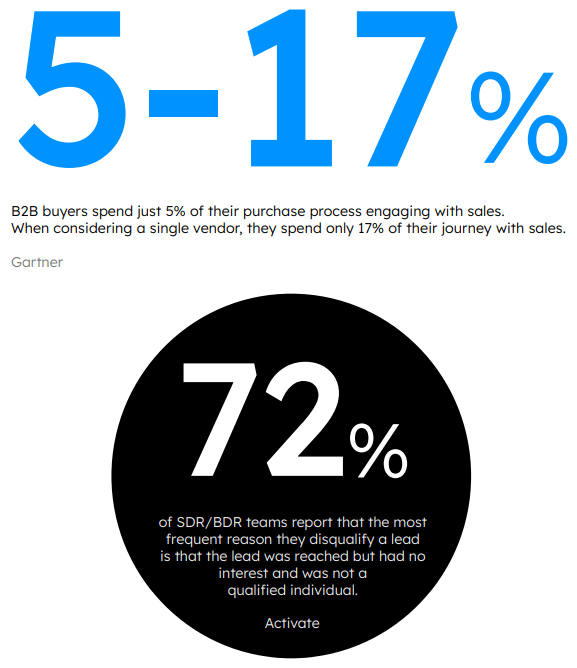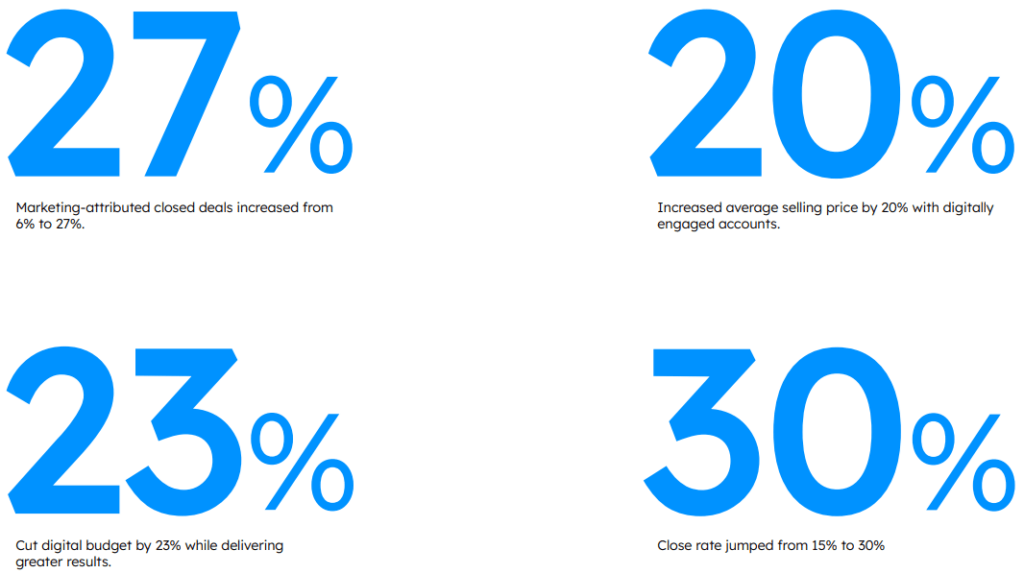The pitfalls of poor strategy
Content syndication has become a priority investment for B2B marketers. In fact, the 2022 State of Demand Generation Report showed an increased investment in content syndication more than any other tactic out of a list of 14. While a strong content syndication strategy can effectively generate pipeline for your business, every worthy investment carries associated risks. In the case of content syndication, the biggest risk is underperformance resulting from common pitfalls such as: Lead Nurture Velocity: How quickly are leads moving from nurture programs to:
- Poor segmentation
- Misaligned goals
- Poor data quality
- Duplicative leads
- Lack of nurturing
In this guide, we will examine each of these potential pitfalls and share strategies for avoiding them to ensure a high-performing content syndication program.
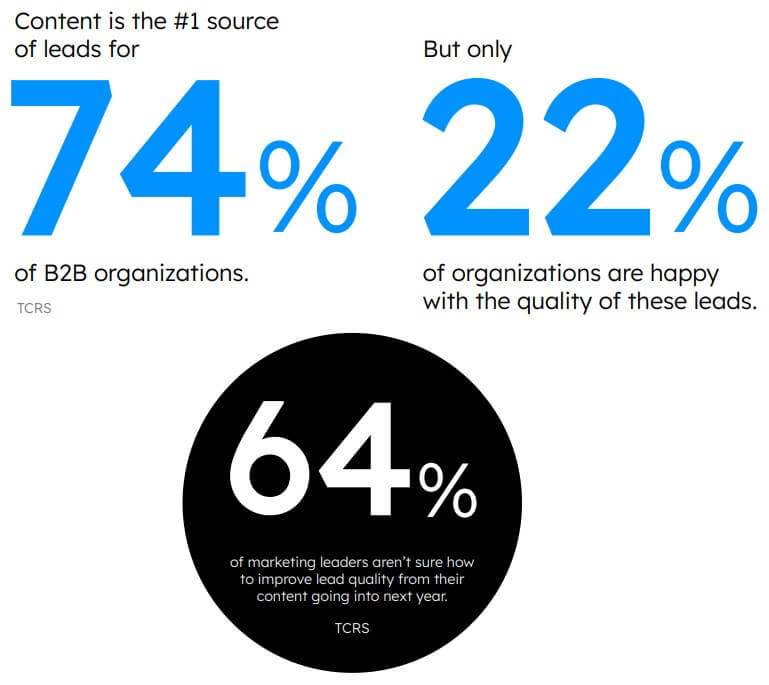
Get your segmentation right
One of the most common reasons your content syndication may be underperforming is imprecise account targeting. A good segmentation strategy should follow these four rules:
- Practical: Segments should be relevant to sales, marketing, and product.
- Homogenous: Companies within a segment may differ in many areas but should be similar in terms of their offering needs.
- Identifiable: Accounts are objectively classified based on accessible criteria and available data.
- Exclusive: Strong segmentation allows buyers to fit in one segment only and covers the most important segments.
Beyond that, you should consider the market, company, and buyer to arrive at precise targeting for your content syndication program.
- Market: At the highest level, identify clusters of companies by region, industry, and organisation size.
- Company: Segment each company internally based on which part of the business you support, what offerings you are bringing to market, and any specific use cases you will want to message about.
- Buyer: Identify exact personas, purchasing roles, and buying groups that make or influence the decision to buy.
Put these together to focus on the decision makers at ideal customer profile (ICP) accounts and offer relevant content for each segment.

Set clear content syndication goals
To be effective, all marketing programs and tactics should be aligned to measurable goals. When it comes to setting content syndication goals, establishing start and end dates, target costs per lead (CPLs), and lead volume goals are simple enough. But where many programs fall short is through a lack of alignment with broader marketing or business goals.
Ask yourself:
- Does your business have specific pipeline and revenue goals? For example, are goals set by:
- Business unit(s)
- Products/solution offerings
- Use cases
- Specific company segments
- Does your marketing team have specific goals for each quarter? Such as:
- Revenue funnel targets: quarterly inquiry, MQL, SAL, and opportunity targets
- Pipeline coverage by sales segments
- Growth goals such as company size, geographic region, or industries you are supporting
Instead of treating content syndication as a generic tactic, think about how to utilise content syndication with greater precision to support strategic business outcomes. Instead of running a massive “always-on” program, you can set up and run specific content syndication programs with precise targeting and lead goals to support a diverse range of marketing targets and business goals.
Clear goal setting elevates content syndication to a strategic component of your marketing programs. As you consider your tactic mix, evaluate the cost per lead, lead volume, and pacing you need for each content syndication program to meet your quarterly goals.
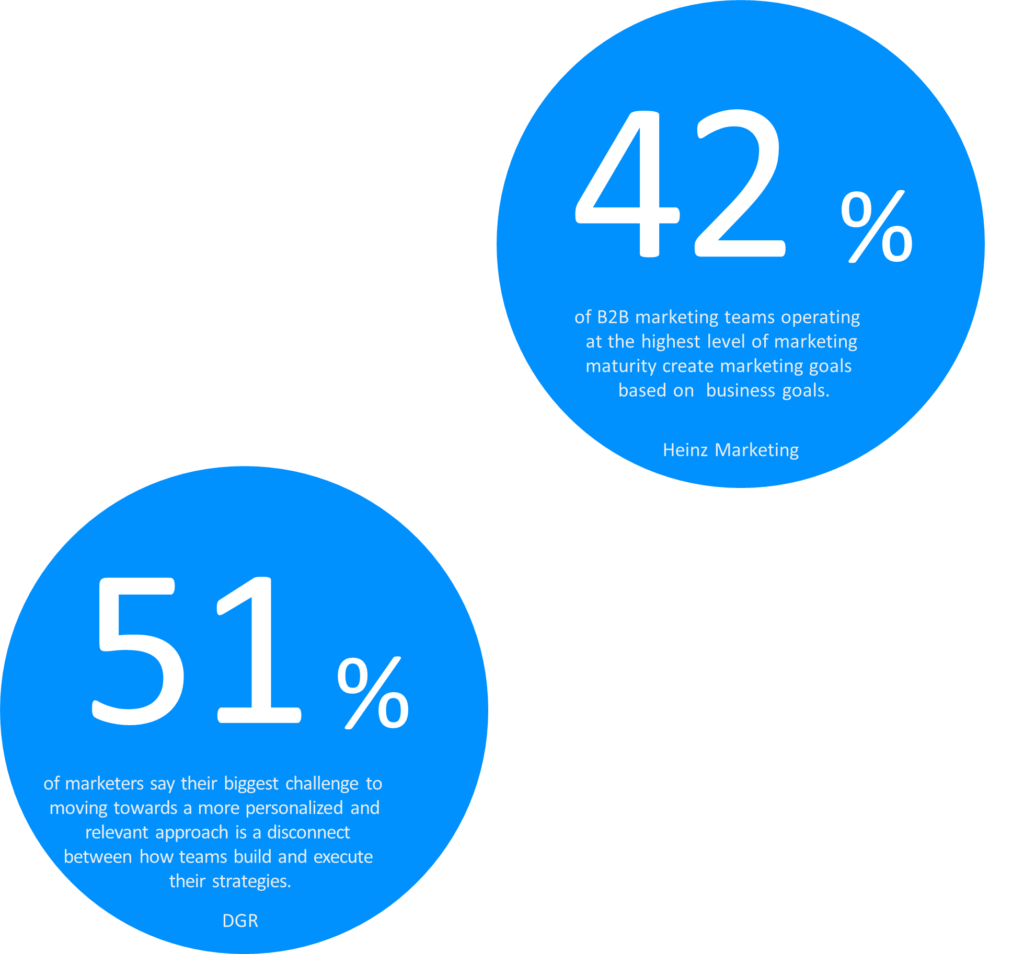
Watch out for poor leads
So now you are approaching your content syndication programs strategically and the leads are rolling in. But if those leads are low quality and your conversion rate drops, all your hard work is moot. Bad data reduces the effectiveness of your nurture efforts and can damage your relationship with sales.
The most common data quality issues with content syndication leads are:
- Non-ICP leads: If you have segmented appropriately, you should be able to determine if your leads match your ideal customer profile. You want to target the right accounts, with the right buyers.
- Incomplete leads: Make sure your leads are not missing key data fields and that they have fully opted–in for company communication and follow up.
- Invalid phone numbers, emails, addresses: Verify that phone numbers are active, emails are deliverable, and addresses match associated companies.
- Unstandardised lead data: Formatting issues (e.g., Acme Incorporated vs. Acme Inc.) and unstandardised column headers (e.g., business phone vs. phone number), can compromise your lead scoring and routing or fail to even upload into your systems correctly.
Always check your lead data from content syndication programs carefully to ensure that it matches your ICP criteria and is compliant, valid, complete, and standardised before uploading leads into your systems. Reject any bad leads and ask your lead provider to replace them.
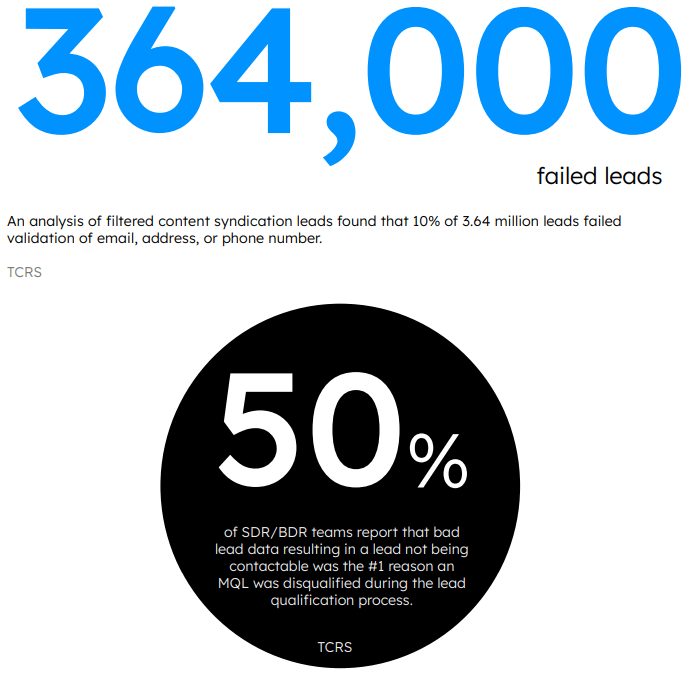
Prevent budget waste
While having quality data is good for your marketing programs, having redundant data is too much of a good thing. Duplicate leads happen when you receive the same buyer’s information from multiple lead providers — meaning you are essentially paying twice for the same lead and draining your syndication budget.
Don’t waste your budget:
- On targeting the wrong accounts. Some content syndication providers use target account lists (TAL); some don’t. Using providers that enable account-based targeting is the best way to ensure you get ICP leads. You can also safeguard your campaign by giving your lead provider an exclusion list of existing customer or competitor accounts, and any accounts already at sales stages.
- On acquiring existing leads. Consider giving your lead provider an email suppression list of opted-in ICP buyers already in your database.
- On overlapping targeting. A common mistake is giving multiple lead providers the same targeting criteria. To reduce duplicate leads, split your targeting across providers.

Nurture your content syndication leads
The most common complaint about content syndication leads is that marketers say they don’t convert. In other words, as soon as a B2B marketing team gets some content syndication leads, they hand them off to their sales or tele-qualification teams to book an immediate demo or meeting. This typically doesn’t happen as content syndication leads represent an early buying signal – not a late-stage opportunity.
If you want your content syndication program to influence opportunities, you must nurture leads before sending them to sales. Due to two significant changes in buyer behaviour, failing to nurture content syndication leads will destroy the performance of your programs.
- B2B buyers need more touchpoints. According to Forrester, the average buyer’s journey consisted of 17 buying interactions in 2019. In 2021 that number jumped to an average of 27 touchpoints before they are ready to make a purchase decision. Content syndication is one of many touchpoints in a typical B2B buying journey.
- Buyers spend little time with sales. When today’s buyers engage with your sales team, they’re looking to make sense of information consumed during hours of self-led research. There’s a small window of opportunity for your sales team to engage with these buyers, which makes nurturing your leads essential to conversion success.
It’s important to note that a content syndication lead is simply a single buying signal – not a marketing qualified lead (MQL.) Buyers who’ve expressed an interest in your content need to be engaged further to increase their lead score before calling them an MQL. Consider using email nurtures, digital display advertising, and personalised content to further engage buyers
